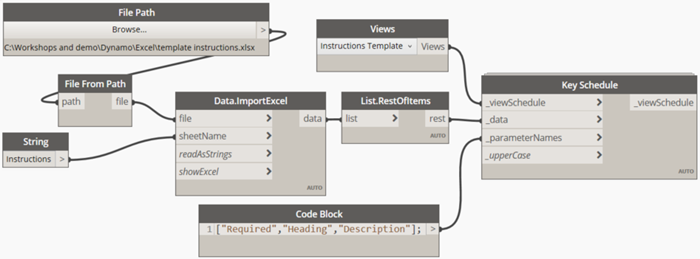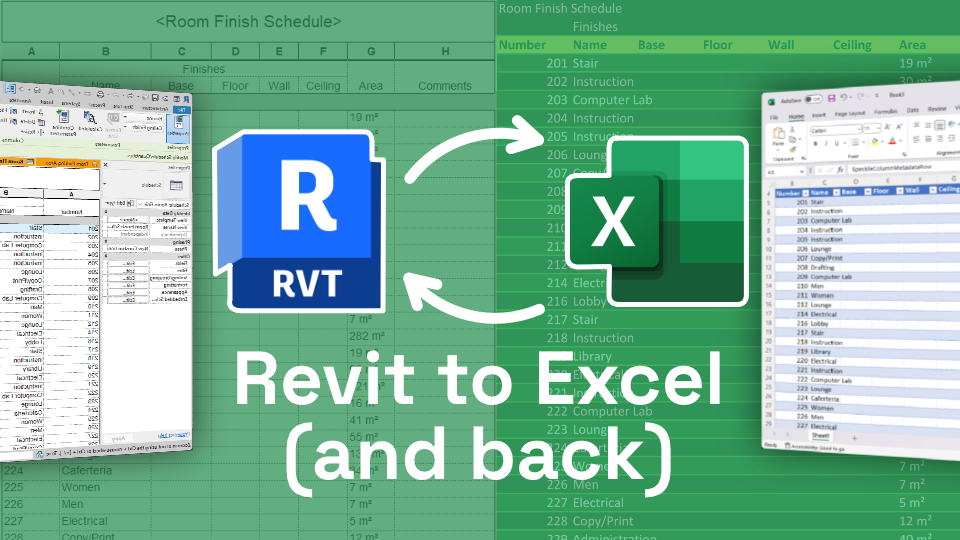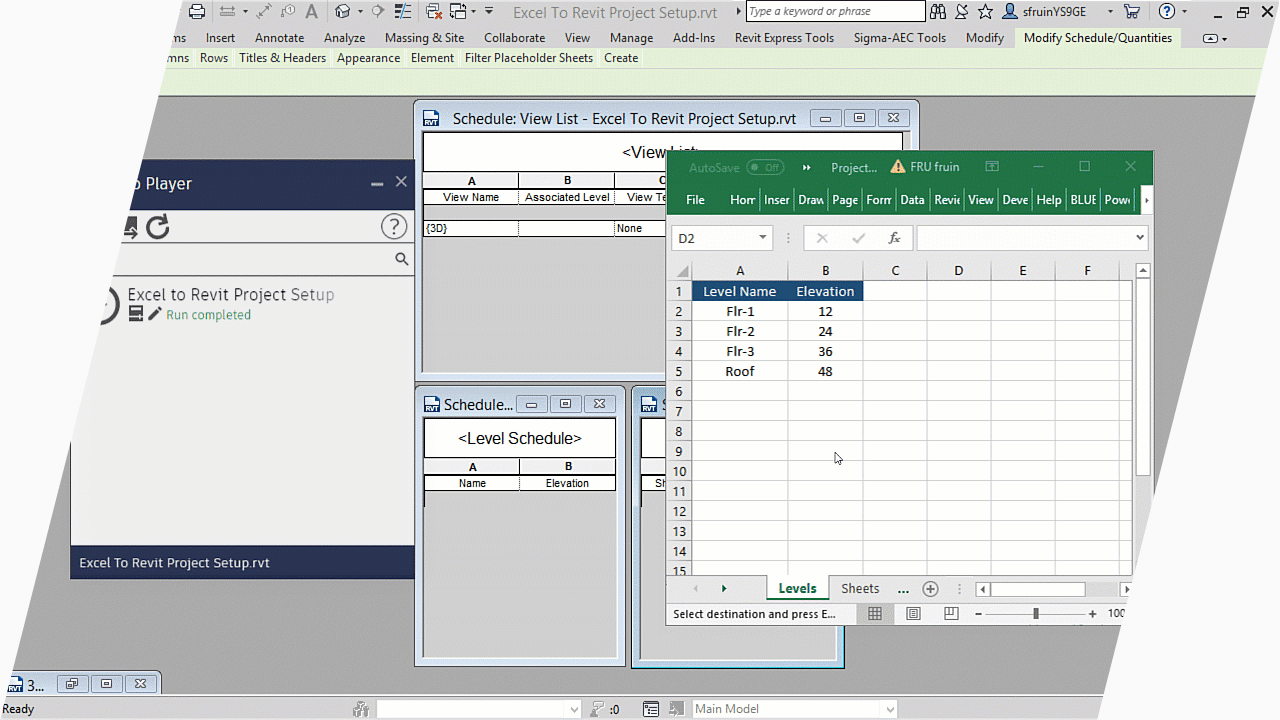Revit Excel Combination Demystified: Improving Operations for Improved Job Coordination
Are you tired of having problem with ineffective job control and time-consuming process? Look no more, because Revit Excel Combination is right here to demystify the procedure and simplify your tasks. With this powerful tool, you can boost job sychronisation and eliminate the headache of hands-on data entrance. In this post, we will lead you via the importance of Revit Excel Assimilation, reveal you just how to enhance process, and supply best techniques for successful combination. Obtain ready to reinvent your job coordination with convenience.
The Significance of Revit Excel Combination
You require to comprehend the significance of Revit Excel integration to properly enhance your process and improve project control. The integration of Revit, a powerful structure information modeling (BIM) software program, with Excel, an extensively used spreadsheet program, supplies countless advantages for architects, designers, and building and construction specialists.

By integrating Revit with Excel, you can eliminate hand-operated information entrance and reduce the threat of errors. This not just saves time however also makes certain precision in your task documentation. You can upgrade data in Excel, and it will instantly update in Revit, preserving uniformity throughout your task.
In Addition, Revit Excel combination improves job sychronisation by making it possible for reliable cooperation among group participants. With data synchronized in between Revit and Excel, everyone can access the most current info and interact effortlessly. This advertises smoother interaction, decreases conflicts, and boosts general task efficiency.
How to Improve Workflows With Revit Excel Assimilation
Optimize your process by effortlessly linking Revit and Excel to streamline your process. By integrating these two powerful tools, you can improve project coordination and boost effectiveness in your work. With Revit Excel combination, you can easily transfer information in between both systems, allowing for seamless interaction and collaboration.

One more advantage of Revit Excel combination is the capacity to develop custom reports and evaluate information more successfully. With Excel's durable attributes, you can perform advanced estimations, develop graphs and charts, and produce thorough records based on the information from your Revit models. This permits you to acquire beneficial insights and make educated choices throughout the project.
Enhancing Task Sychronisation With Revit Excel Assimilation
By seamlessly linking your layout software program with powerful data evaluation devices, you can considerably boost the coordination of your jobs. Revit Excel integration permits you to improve your process and improve job sychronisation by eliminating hands-on information access and reducing errors. With this integration, you can easily move information in between Revit and Excel, guaranteeing that all job info is up to day and accurate.
Among the key advantages of Revit Excel assimilation is the ability to import and export information click to read more in between both software perfectly. This means that you can easily import existing task data from Excel into Revit, conserving you effort and time in returning to info. You can export job information from Revit to Excel, enabling you to do sophisticated analysis and calculations making use of the effective attributes of Excel.
In Addition, Revit Excel assimilation enables you to produce vibrant web links between both software program (revit add ins). This suggests that any adjustments made in Revit will immediately update in Excel, and vice versa. This makes certain that all task stakeholders are dealing with one of the most current details, improving job control and reducing the threat of errors
Conquering Difficulties in Revit Excel Combination
When overcoming difficulties in the combination of Revit and Excel, it is essential to make certain seamless data transfer and minimize errors. One typical challenge is the compatibility of information layouts in between Revit and Excel. To tackle this, you can utilize plugins or add-ins that help with the conversion of information from one layout to one more. These tools aid maintain the integrity of the information during the transfer process.
Another challenge he said is the absence of synchronization in between Revit and Excel. It's vital to develop a clear process that guarantees both platforms are updated in real-time. This can be accomplished by making use of cloud-based partnership tools or developing a system for normal data syncing.
Taking care of huge datasets can also be bothersome. Revit and Excel have various capacities when it involves handling huge quantities of information. To conquer this challenge, you can split the he said data right into smaller sized, convenient chunks or utilize information filtering system strategies to concentrate on certain areas of rate of interest.
Lastly, human mistake can bring about inconsistencies in between Revit and Excel information. It is necessary to educate group participants on the assimilation process and establish high quality control steps to capture any type of errors. Normal audits and cross-checks can aid recognize and correct any disparities.
Finest Practices for Successful Revit Excel Combination
To guarantee successful combination of Revit and Excel, it is very important to follow some best practices that will assist simplify your workflow and minimize errors. Firstly, always start by developing a clear and orderly folder structure for your task documents. When needed, this will certainly make it much easier to situate and update the essential files. Furthermore, when linking Excel information right into Revit, make sure that the data is clean and cost-free from any format concerns that could trigger mistakes. Use regular naming conventions for your Excel worksheets and columns to prevent confusion.
One more crucial practice is to consistently update your Excel data in Revit. This can be easily accomplished by establishing a clear procedure for upgrading the connected data. Make it a routine to assess and upgrade the data at regular intervals, especially when changes are made to the project. This will certainly assist keep your information precise and as much as day.

Conclusion
So, there you have it - revit Excel assimilation does not have to be a challenging job. With revit Excel assimilation debunked, you'll be well on your way to taking full advantage of the potential of these tools and taking your tasks to new elevations.
You can export your Revit routines to Excel, make modifications or updates in Excel, and then import the upgraded information back right into Revit with simply a few clicks. Revit Excel assimilation enables you to enhance your workflows and boost job sychronisation by getting rid of manual information entrance and decreasing mistakes. With this assimilation, you can easily move information between Revit and Excel, guaranteeing that all project info is up to date and precise.
You can export project information from Revit to Excel, enabling you to carry out innovative analysis and calculations utilizing the powerful attributes of Excel.
In addition, when connecting Excel data right into Revit, guarantee that the data is complimentary and clean from any kind of format issues that can trigger errors.